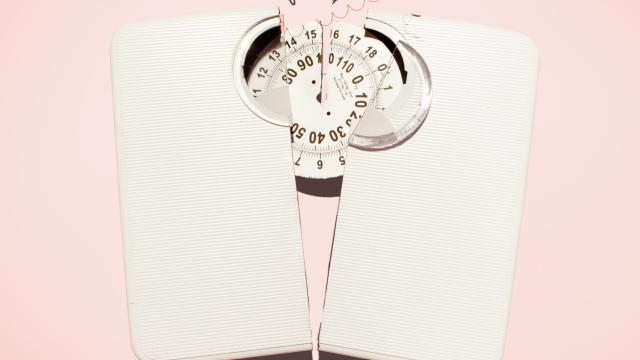Around the world, the negative effect of looking at thin and unrealistic media images on women’s own body image has become an increasing concern.
In July 2021, Norway joined the list of countries (Israel in 2012, France in 2017) that have legislated that when advertising images have been photoshopped to improve a person’s shape or size (for example, making a model’s legs longer and thinner), they must add a disclaimer label telling the viewer this. This applies to advertising both in print and online in social media.
In Australia, this recommendation is part of a voluntary industry code of conduct for the fashion, media and advertising industries.
The underlying logic is that adding a disclaimer label such as “this image has been digitally altered” will alert the viewer the image of the model is not realistic – therefore it is not portraying a “real” person in that sense. So if women and girls no longer compare themselves with the near-perfect models in magazines and on social media, their own body image will be preserved.
This seems like a sensible strategy, but does it work?
Unfortunately, the evidence is mounting that disclaimer labels simply do not work. Many experiments show that women and girls experience the same drop in their body image when they look at attractive media images with or without a disclaimer label.
In short, disclaimer labels do nothing to protect women and girls from the negative effects of idealised media exposure. This seems the case no matter what the size or precise wording of the disclaimer label. Sometimes, far from being helpful, disclaimer labels even make body dissatisfaction worse.
So why don’t disclaimer labels work?
It turns out women do not behave as the legislators have assumed. Disclaimer labels do not make women judge the image as any less realistic, and they do not make women compare any less with the model in the image. If anything, they tend to compare more.
Further, our eye-tracking studies show that disclaimer labels can make women pay more, rather than less, attention to the model’s body and body parts than they normally would. So it seems the underlying logic for the use of disclaimer labels is flawed.
This leads to the interesting question of why disclaimer labels do not decrease comparison with the models. My view is, no matter what the text of the label, women and girls are still exposed to the ideal image. Even when they know it is fake, the image still sets the cultural standard for beauty by which women and girls expect to be judged.
We know “a picture is worth a thousand words”, so the image will speak more loudly than the text of the disclaimer label. In this light, it is not surprising the negative effect of viewing faces and bodies – touched up to perfection – cannot be undone or counteracted by the inclusion of a few words.
Interestingly, women are sceptical about the effectiveness of disclaimer labels, and believe that the negative visual impact will overpower the impact of any form of disclaimer label. They suggest showcasing greater diversity in body size, shape, and appearance would be a more effective strategy for improving body image than the use of disclaimer labels after the fact.
Another important factor is that disclaimer labels provide very limited information. Specifically, they do not show the nature or extent of the photoshopping carried out. Viewers see only the digitally edited “after” image, and not the original unedited “before” image. And most people are not skilled at detecting digital editing.
So, when presented with a digitally altered image, women and girls have no basis for judging just how unrealistic or inappropriate a comparison that image is.
The pernicious effect of disclaimer labels
Over time, I have come to the conclusion that, rather than being read as saying “Don’t compare yourself with these thin and unrealistic models”, disclaimer labels are actually read as saying something closer to “It must be really important to be thin and attractive”.
Given that disclaimer labels show even the thin and very attractive bodies and faces of models need to be digitally corrected and enhanced, logically they are not going to make the owner of an “average” body feel any better about their own body. In this way, disclaimer labels may actually reinforce the narrow and rigid beauty ideals they are meant to undermine.
No matter how reasonable or appealing disclaimer labels sound, they are not an effective strategy for alleviating body dissatisfaction. Legislators and policy-makers might better turn their attention to developing other strategies directed at broadening and diversifying the representation of women’s bodies on media.![]()
Marika Tiggemann, Matthew Flinders Distinguished Emeritus Professor in Psychology, Flinders University
This article is republished from The Conversation under a Creative Commons license. Read the original article.

Leave a Reply
You must be logged in to post a comment.